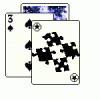So, for a film class, I got permission to produce a 2D video game. I am instructed to focus on the screenplay BEFORE focusing on gameplay elements. As such, I am building the game in response to a custom script.
Story: Detective kills a man for the first time while on duty, is subsequently cursed through accidental circumstances, and as a result of the curse, spontaneously murders those around him when his emotional state wavers significantly. While pursuing the mystery of how to remove said curse, the detective dodges the suspicion of his co-workers around the ongoing serial murders and struggles over his inner feelings of guilt and weakness.
Now, I'm expecting the game to be an interactive drama, so I am going with the convention that the player will walk around a 2D environment, talk with NPCs, interact with items in the environment, gather clues in an inventory-journal combination, and have a relatively linear story to minimize production costs and effort.
My hope is to devise gameplay elements that are targeted at generating in the player the emotions that the protagonist is feeling. Namely, the protagonist feels that he is losing control of himself and as a result is losing to a darkness inside attempting to overpower him.
Here is a list of tentative gameplay mechanics I have considered incorporating. I was simply hoping for your guys' thoughts about their effectiveness...
1) a heartbeat sound is played whenever the character fails a task (not necessarily the player as sometimes the story line events will make the character feel guilt / weakness as well) and the camera momentarily zooms in on the player, alerting the player of the curse gaining more power for a potential rage.
2) If the curse becomes too powerful, the protagonist will begin some type of aggressive action automatically (power quantity will be indicated by a heartbeat counter in the corner of the screen as well as frequency of sound effect during "mishaps" in player action or simply the automatic story events). The player will be able to slow down, pause, and eventually/possibly prevent the continuation of whatever the animation of the character is (pulling and aiming gun, assaulting someone, etc.) by pressing certain buttons on the controller. Attempting to model this activity from things such as Beyond: Two Souls or the end snowy mountain sequence from Journey, etc.
3) After any "rage" incidents, the curse's power is abated for the time being (w/ curse power level reset to 0).
4) Most of the time, it would require the players skill to prevent "attacks" from happening, but if the curse power becomes too large, then the player would be unable to completely prevent a given atrocity.
Are there any unforeseen complications I may not be seeing? Does this sound like a mechanic that can get the player invested in the sense of success / failure that would be felt by the protagonist?










